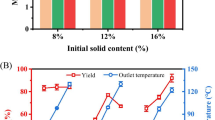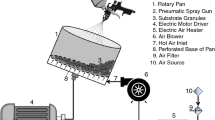Powders of Dunaliella salina biomass were obtained by spray drying a cell concentrate under different drying regimes. A three-factor, two-level experimental design was employed to investigate the influence of inlet temperature, outlet temperature and feed solids on β-carotene recovery. The effect of microencapsulation in a polymer matrix of maltodextrin and gum arabic was also studied. All powders were stored under specific conditions to assess the stability of the native β-carotene. There was a trend indicating that lower outlet temperature yielded higher carotenoid recoveries, β-carotene recovery varying between 57% and 91%. Microencapsulated biomass yielded 100% recoveries. All non-microencapsulated powders were unstable in terms of β-carotene content in the presence of natural light and oxygen showing 90% degradation over a 7-day period. The incorporation of a microencapsulating agent had a significant increase in the storage stability. Results indicated a first-order degradation of the β-carotene in microencapsulated powders with kinetic constants of 0.06 day−1 and 0.10 day−1. HPLC analysis showed no effect of drying processes on isomer composition (9-cis-β-carotene and all-trans-β-carotene ratio). This behaviour was also observed during storage of the microencapsulated powders.
Similar content being viewed by others
Author information
Authors and Affiliations
Additional information
Received 16 October 1996/ Accepted in revised form 13 November 1997
Rights and permissions
About this article
Cite this article
Leach, G., Oliveira, G. & Morais, R. Spray-drying of Dunaliella salina to produce a β-carotene rich powder. J Ind Microbiol Biotech 20, 82–85 (1998). https://doi.org/10.1038/sj.jim.2900485
Issue Date:
DOI: https://doi.org/10.1038/sj.jim.2900485




